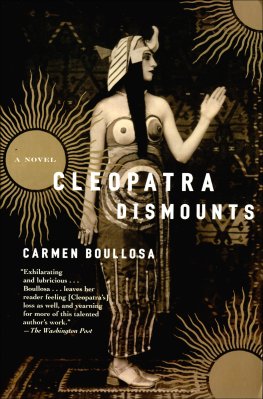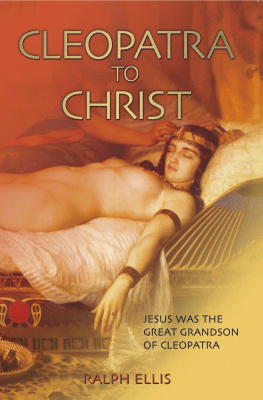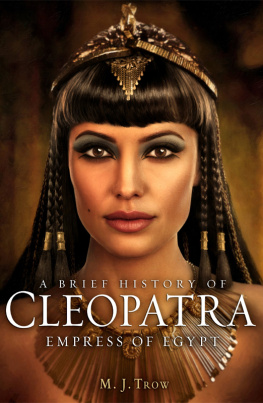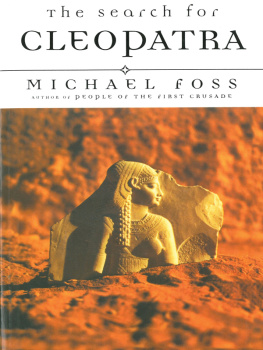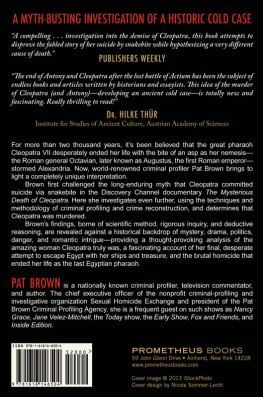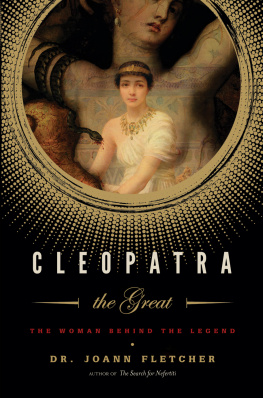C LEOPATRA THE G REAT
The Woman Behind the Legend
Dr. Joann Fletcher

For my parentswith love
Contents


As the most famous woman in ancient history, Cleopatra is intimately associated with ancient Egypt and is perhaps its best-known monarch. What is rather less well known is that she was actually European by descent and, like her illustrious predecessor Alexander the Great, traced her origins back to Macedonia in northern Greece. She spoke Greek, her name was Greek and her life was bound up in the fate of the Hellenised world as it struggled for survival against the expansion of Rome.
She was a key player in events which shaped Western civilisation, and even her death was a turning point in Europes history. Yet the general belief prevails that her life can only be traced through the well-documented careers of the Roman men with whom she dealt. Indeed, it was recently claimed that her celebrity seems to have been due primarily to the fact that she slept with both Julius Caesar and Mark Antony the two most powerful men of her day and that she was credited with being extremely ambitious.
Cast in their shadow as little more than an exotic yet flawed appendage, a convenient scapegoat for the mens own shortcomings, Cleopatra appears in Roman sources only when affecting Roman interests. There is little to suggest that she restored Egypt to its former glories by re-creating a great empire at Romes expense: her astonishing achievements were ignored in Romes official version of events, with most of the documentary evidence deliberately destroyed, texts suppressed and her name erased from the records.
Having done everything it could to destroy all evidence of the woman herself, Romes hate-filled propaganda created its own version of Cleopatra which resonates to this day. She was one of only two people whom the Romans ever truly feared, so they repaid her defiance with a blend of lies and misogyny so powerful that she has passed into Western consciousness as little more than a femme fatale, clinging to power until her seductive charms failed her and a dramatic snakebite suicide elevated her to the status of ultimate tragic heroine. With a name now synonymous with tragedy and excess, the popular image of Cleopatra is based on little more than Roman propaganda, Elizabethan drama and Elizabeth Taylor, while the real Cleopatra, for all her fame, was almost completely obscured. For a long time classical scholars seemed unwilling to venture into the exotic world of ancient Egypt, and Egyptologists were largely dismissive of an era they regarded as un-Egyptian. Even in the 1960s, her reign was described as a blacked-out landscape illuminated by occasional flashes of lightning when Egypt impinges upon world events. Yet by this time things had finally started to change in certain quarters. In his landmark biography of Cleopatra first published in 1953, Hans Volkmann referred to the beginnings of new research which had torn away the deceptive web which the hate of her enemies had spun around Cleopatra, and ascertained the truth. And by the 1980s so much new information had come to light that scholars began to collaborate for a major US exhibition in 1988 followed by a more recent version in Europe in 2001.
Some astonishing new evidence was assembled, ranging from commemorative texts, epitaphs and eulogies to tax records, astrological charts and personal correspondence; even Cleopatras own handwriting was identified only a few years ago. With the Roman sources now more evenly balanced with Greek and Egyptian evidence, vital clues in archaeological reports from sites now lost can be combined with details of sites which have only recently come to light, including Cleopatras own palace quarters. Just as her coins, statuary and architecture contribute to the overall picture, so the jewellery, clothing, cosmetics, food, furnishings and all the minutiae of daily life as it was lived in the first century BC are able to add a further rich layer of detail to what is now known about the woman herself. By re-creating life within her seaside palace in Alexandria, at her splendid estate by the Tiber or on board her golden cruise ship, details of her famous banquets, vast libraries, exotic wardrobe and even beauty regime can be used to explore and indeed explode a number of long-standing myths, from her first appearance on the world stage as she emerged from a rolled-up carpet to her legendary death by snakebite.
Having replaced such myths with more rational explanations, the same range of evidence also makes it possible to pinpoint Cleopatras specific whereabouts at precise moments in her life. On 25 March 51 BC , only days into her reign, she appeared as a precocious seventeen-year-old astutely reviving ancient rites by rowing the sacred bull, the earthly incarnation of the sun god, along the river Nile. Then at midnight on 28 December 47 BC , having given birth to her first child, she would have stood within the rooftop shrine of Dendera temple and in moonlit rites assumed the powers of the mother goddess Isis. Even her death on 10 August 30 BC , accompanied by a full supporting cast, was designed to leave the very longest of lasting impressions. Very much the performer staging spectacular events to emphasise a divinity she had held since birth, Cleopatra literally transformed herself into a goddess for every occasion. Adapting her image to appeal to audiences at home and abroad, she appeared as Venus in the heart of Rome, sailed across the Mediterranean as Aphrodite and restored Egypts former empire as Isis, having absorbed all the attributes of the feminine divine.
She was a frequent traveller, and detailed examination of the ancient sources makes it possible to follow her from Egypt to Greece, Asia Minor, Arabia and Italy. For although Cleopatra had been born and raised in the Greek city of Alexandria on Egypts Mediterranean coast, she had also lived in Rome for two years and spent many months in Athens, Ephesus, Antioch and Tarsus. Her regular journeys by sea reflected her upbringing within the ancient worlds busiest and wealthiest port. Created by Alexander the Great in 331 BC to transform Egypt from an inward-looking backwater into a vibrant cosmopolitan centre, the magnificent city of Alexandria lay at the heart of world affairs and its greatest asset was unquestionably Alexander himself. His mummified body on permanent display was a constant symbol to Cleopatra of her own potential greatness, and her determination to reassemble his vast empire stretching as far as India saw her withstand Roman expansion for over twenty years, successfully maintaining Egypt as the last of Alexanders kingdoms to remain independent.
Although much of Cleopatras reign was devoted to the world beyond Egypt, her ancient kingdom formed the exotic backdrop for the traditional rites needed to maintain her status as divine monarch. Appearing before her subjects on regular state journeys up and down the Nile ensured both their support and the financial resources necessary to implement her ambitious foreign policies. Even her coinage, depicting a stern, almost masculine-looking profile and purposefully manufactured to appeal to vast areas of a world ruled by men, was valuable propaganda. Such images are regarded by the modern world as evidence that Cleopatra was no great beauty, and in the apparent absence of any true portraits it was even claimed that while Nefertiti is a face without a queen, Cleopatra is a queen without a face.
Next page

